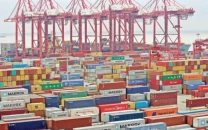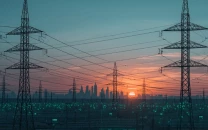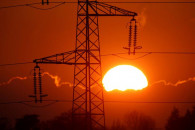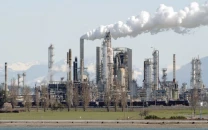Urban planning for cars in capital
High population density on outskirts results in more travel time, large CO2 footprint

Islamabad, once known as a city of parks and gardens, is rapidly becoming a city of cars and SUVs.
It is a great place to live in – if you are a car. Thanks to Doxiadis Associates, the capital was designed assuming that there would never be an uncontrolled urban sprawl and that the carless poor would live only in Rawalpindi.
Fast forward to 2022, the capital still has no zoning for slums and student hostels. In fact, one cannot survive in the capital if they do not own a car.
At a time when modern cities such as Singapore and Oslo are declaring a war on cars, the dominant urban planning approach of the CDA still revolves around widening of roads to accommodate more vehicles.
Doxiadis’s master plan is still being protected like a holy relic and the administration is not willing to reimagine Islamabad as a city for the people and by the people.
Modelled on a single-family home philosophy borrowed from the US, the urban density in the city centre has been engineered by the elite and by the CDA to remain remarkably low.
For example, Sector F-7, despite being part of the city centre, has just 1,300 housing units (of more than 5,400 square feet per unit area) and a population of mere 2.5% of that of Islamabad.
This has led to a high population density in the outskirts of Zone-1 while the city centre remains thinly populated, resulting in a high travel time and a large CO2 footprint for the majority of the workforce.
Islamabad highway (now Islamabad Expressway) is a classic case study of how poor planning can lead to uncontrolled urban sprawl and poor service delivery in the unplanned urban areas.
The road project was aimed at bypassing the heavy traffic coming from the IJP Road to reach GT Road via Islamabad highway.
Recommendations
In the spirit of that, the CDA should have ensured strict zoning laws to avoid any urban development in Zones IV and V around Islamabad highway but instead it started issuing NOCs to housing societies for government employees such as Korangi Town, Naval Anchorage, Gulberg, CBR and Pakistan Town.
Such bypass roads are normally tolled to discourage excessive use but the CDA chose not to and removed even the toll plaza at its exit point, providing an incentive for the state-owned housing societies to take benefit of the toll-free road.
Today, Islamabad highway is a total mess. As the original Islamabad got expensive to live in, more people started moving to newer societies, such as Bahria and DHA, which boast of better development standards than those of the CDA.
This translates into traffic jams on Islamabad highway during peak hours when thousands of people travel from Zone-V to the city centre every day.
Theories
What was the CDA’s solution to this? Add more lanes. However, as the Downs-Thomson paradox predicts, addition of new roads is only a short-term relief to motorists and all benefits vanish due to ‘induced demand’ in the long run.
More people got convinced of shifting to better developed housing societies in Zone-V, their Marchetti’s constant increased as they migrated, worsening the traffic problem in a few years down the lane.
The Braess’s paradox is well known in the field of urban transport planning. It states that adding one or more roads to a road network can slow down the overall traffic flow through it.
This is what we observed when a four-lane highway was extended till Gulberg and the traffic from that point has never been worse since then.
The Department of Transport in the UK learnt that investments in infrastructure should save travel time but instead people invest the travel time saved in travelling a longer distance – a classic case of Jevons paradox in play.
In brief, the growing upper middle class in Islamabad has no affordable place to live in except for the societies around the expressway.
CDA has failed to promote the culture of high-rise studio apartments in city centres and the new sectors are either underdeveloped or too expensive for the working class.
In the absence of any reliable public transportation, all these people need cars for travelling to work daily.
The irony at the top of this is that there is no metro bus route planned along the Expressway. Despite a safe city network, there are no deliberations on designating high occupancy vehicle lanes or carpool lanes on the Islamabad Expressway.
All these inactions on the part of the CDA and expansion of roads instead of addressing the root causes will continue to have unintended consequences.
Unless the government starts converting government housing in G6 and F6 sectors of Islamabad into densely populated and vibrant city centres with a lot more commercial spaces and high-rise apartments, the housing problem will keep on showing up as the excessive traffic on Islamabad’s major arteries.
This is much easier said than done and needs a paradigm shift in urban planning.
The writer is a Cambridge graduate and is working as a strategy consultant
Published in The Express Tribune, February 7th, 2022.
Like Business on Facebook, follow @TribuneBiz on Twitter to stay informed and join in the conversation.



















COMMENTS
Comments are moderated and generally will be posted if they are on-topic and not abusive.
For more information, please see our Comments FAQ